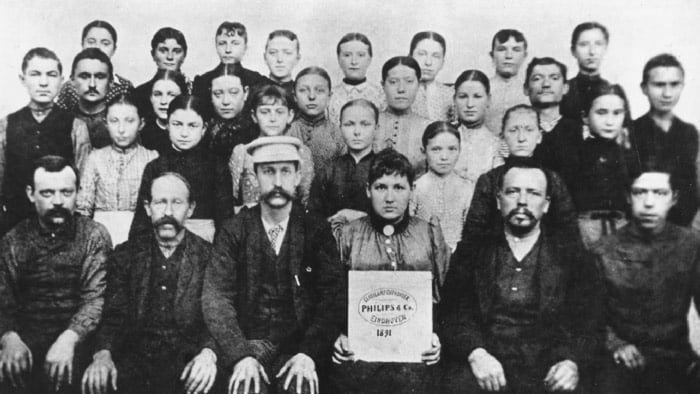Philips Company History
When considering the evolution of technology and innovation, Philips stands out as a beacon of progress and adaptability. Founded over a century ago, Philips has not only been a major player in the electronics industry but has also profoundly shaped the way we live and interact with technology.
Humble Beginnings
Philips' journey began in 1891, when Gerard Philips and his father, Frederik Philips, established the company in Eindhoven, Netherlands. Their initial focus was on producing carbon-filament lamps, setting the groundwork for what would grow into a global conglomerate. The early years were fraught with challenges, including financial difficulties and fierce competition. However, their perseverance and commitment to quality ultimately paid off as they enhanced the efficiency and reliability of their products.
Rise to Prominence
By the early 20th century, Philips had emerged as one of the largest producers of light bulbs in Europe. Their success was not solely due to mass production; it stemmed from their emphasis on innovation. In 1914, they established the Philips Research Laboratory, known as NatLab, which was pivotal in fostering a culture of research and development that would fuel future growth.
As I explored further, I discovered Philips’ expansion into the radio industry during the 1920s and 1930s. Recognizing the potential of radio broadcasting, Philips began producing radios in 1927. Their products quickly gained popularity for their quality and affordability, with over one million radios sold by 1932—a testament to their understanding of consumer needs and market trends.
Resilience During World War II
The outbreak of World War II presented significant challenges for Philips. The war disrupted operations and affected company facilities, yet their resilience and ingenuity shone through during this tumultuous period. Philips managed to relocate key research personnel and continued their work in secret, contributing advancements in radar technology and other critical wartime innovations.
Post-War Innovation and Expansion
After the war, Philips faced the task of rebuilding and adapting to a rapidly changing world. The post-war era saw the company venturing into new territories and product lines. In the 1950s, Philips played a crucial role in developing the cassette tape. Introduced in 1963, the compact audio cassette revolutionized how people listened to and recorded music, becoming a global standard that influenced music consumption for decades.
Philips’ collaborative spirit was evident in their partnership with Sony in the late 1970s to develop the compact disc (CD). This innovation not only transformed the music industry by introducing a new medium for digital audio but also showcased Philips' commitment to pushing technological boundaries. The success of the CD paved the way for future digital media formats and underscored the importance of international collaboration in technological advancement.

Continued Diversification and Technological Advancements
Throughout the latter half of the 20th century, Philips continued to diversify and innovate. They made significant strides in consumer electronics, including the development of the VHS format and contributions to the creation of the DVD. Their advancements in television technology were also noteworthy, with the introduction of Ambilight TVs in the 1990s, which enhanced the viewing experience by projecting ambient light that matched the on-screen content.
As I delved into Philips' ventures into healthcare, I was impressed by their early recognition of the importance of medical technology. Starting in the 1980s, the company invested heavily in healthcare solutions, acquiring several medical technology firms and expanding its portfolio to include medical imaging, patient monitoring, and health informatics. Today, Philips is a leading company in health technology, focusing on improving patient outcomes and healthcare efficiency.
Adapting to Market Dynamics
What stands out about Philips is their ability to adapt to changing market dynamics and technological landscapes. Recently, they have strategically shifted their focus from traditional consumer electronics to health technology and lighting solutions. In 2016, Philips Lighting became a separate entity, later rebranded as Signify, specializing in lighting products and services. This allowed Royal Philips to concentrate on healthcare technology, aligning with global trends toward health and wellness.
Commitment to Sustainability and Corporate Responsibility
Reflecting on Philips' journey inspires me due to their continuous innovation and adaptability. From producing light bulbs in a small factory in Eindhoven to becoming a global leader in health technology, Philips exemplifies how a company can evolve while remaining committed to improving people's lives through meaningful innovation.
In exploring Philips' history, I noted their commitment to sustainability and corporate responsibility. They have set ambitious goals to reduce their environmental footprint, aiming to become carbon-neutral in their operations and focusing on circular economy principles. This dedication aligns with the global emphasis on sustainable practices and corporate citizenship.

Embracing Digital Transformation
Moreover, Philips has embraced digital transformation, integrating artificial intelligence and data analytics into their products and services. Their focus on connected care solutions highlights their vision for the future of healthcare, where technology plays a crucial role in enhancing patient care and well-being.
Conclusion: A Rich Tapestry of Innovation
In conclusion, Philips' history is a rich tapestry of innovation, resilience, and transformation. Their contributions across various industries have left an indelible mark on the world. As I continue to observe the technological landscape, I eagerly anticipate how Philips will further shape the future with their pioneering spirit and dedication to improving lives. Their story is not merely about a company's success; it is a testament to the impact that sustained innovation and a commitment to societal well-being can have on the world.
